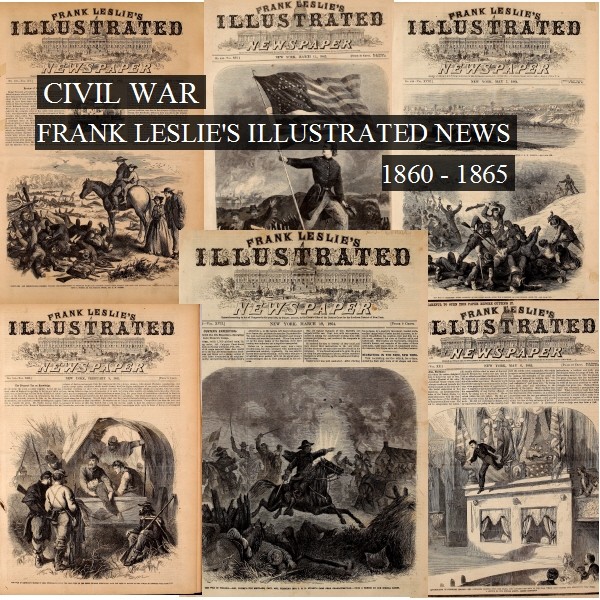
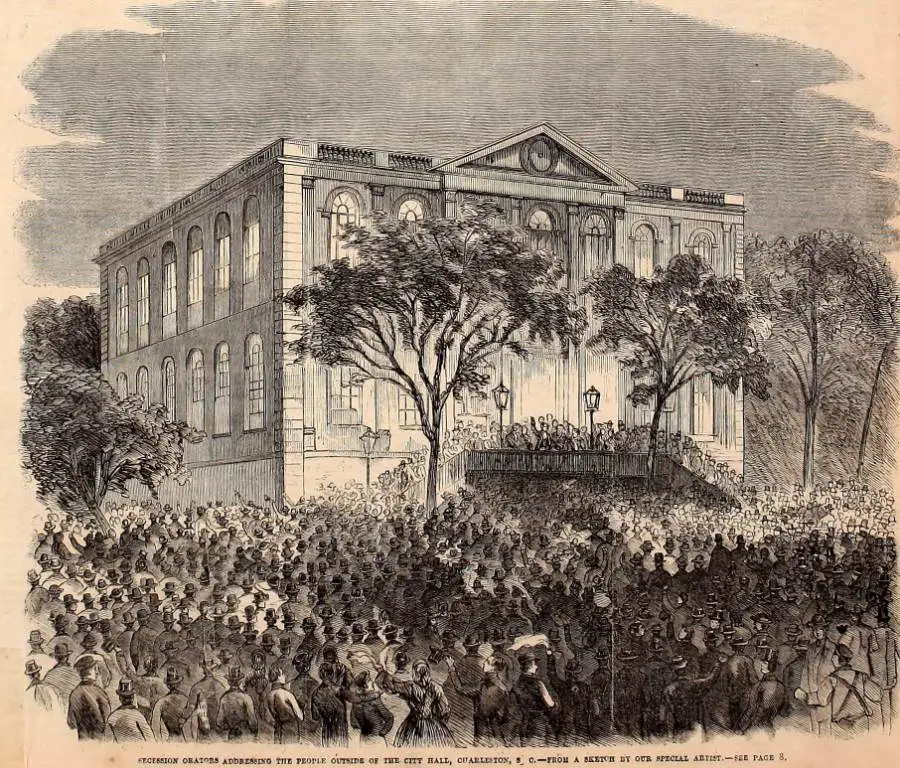
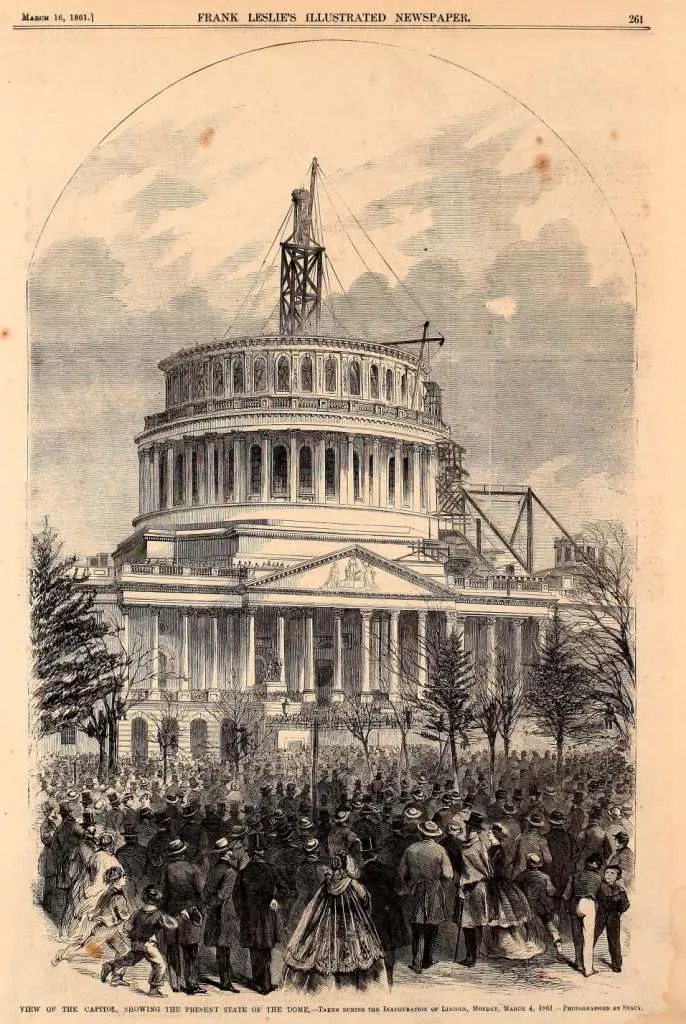
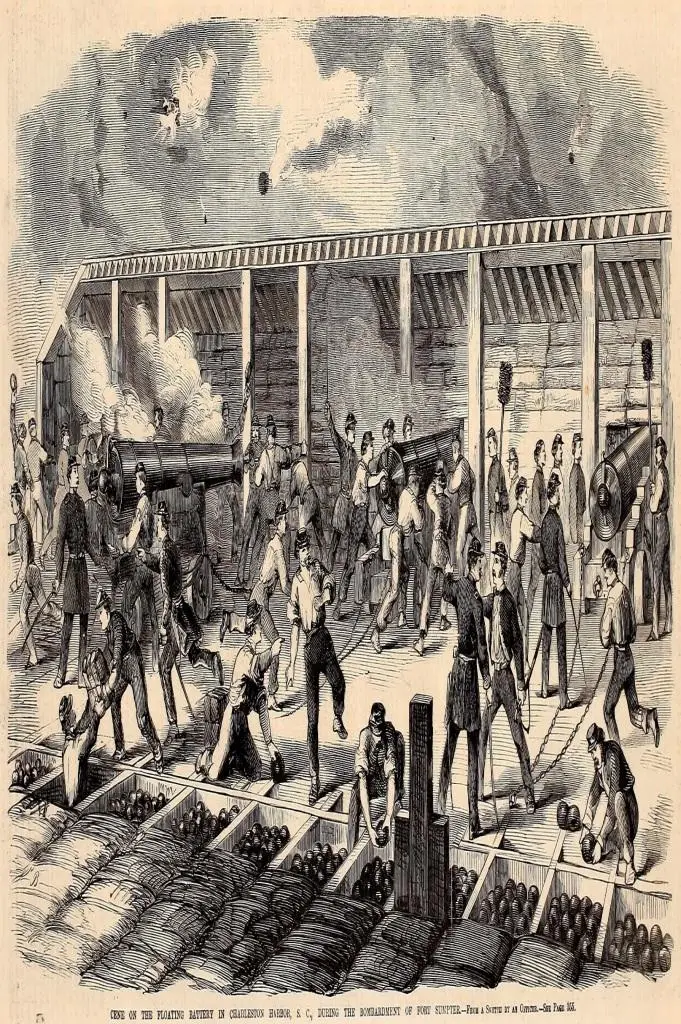
Civil War: Frank Leslie’s Weekly Illustrated Newspaper (1860-1865)
$19.50
Description
Frank Leslie’s Illustrated Newspaper: The Civil War
Timeline of Main Events (1860-1865):
- November 6, 1860: Presidential election results indicate a Republican victory, triggering “wild excitement” and “terrible agitation” in Southern states.
- November 17, 1860: South Carolina Legislature authorizes a convention to discuss the state’s course of action. Secession is a widely discussed option.
- November 24, 1860: Frank Leslie’s Illustrated Newspaper reports on the secession movement in the South, including meetings and resignations of Federal officers.
- March 4, 1861: Abraham Lincoln’s inauguration. Frank Leslie’s Illustrated Newspaper publishes his inaugural address, emphasizing his desire to maintain the Union.
- April 12, 1861: Attack on Fort Sumter by Confederate forces in Charleston Harbor, South Carolina, marking the beginning of the Civil War.
- April 27, 1861: Frank Leslie’s Illustrated Newspaper reports on the attack on Fort Sumter, describing the bombardment and Major Anderson’s defense.
- July 21, 1861: First Battle of Bull Run (Manassas Junction), Virginia.
- July 27, 1861: Frank Leslie’s Illustrated Newspaper reports on the Battle of Bull Run, including the initial advance of the Federal army.
- 1862: Battle of the Monitor and the Merrimac.
- 1862: Battle of Shiloh (Pittsburg Landing).
- September 17, 1862: Battle of Antietam, Maryland.
- July 1-3, 1863: Battle of Gettysburg, Pennsylvania.
- July 1863: New York City Draft Riots.
- July 25, 1863: Frank Leslie’s Illustrated Newspaper reports on the New York City Draft Riots, detailing the violence and the underlying issues.
- 1864: General William T. Sherman’s Atlanta Campaign.
- 1864: General William T. Sherman’s March to the Sea.
- April 14, 1865: Assassination of President Abraham Lincoln.
- April 29, 1865: Frank Leslie’s Illustrated Newspaper issue hints at future extensive coverage of the Lincoln assassination.
- May 20, 1865: Frank Leslie’s Illustrated Newspaper publishes an illustration depicting the final disposition of John Wilkes Booth’s body, claiming it is based on information from an officer involved in the event.
- September 16, 1865: End date of the Frank Leslie’s Illustrated Newspaper issues covered in the excerpt.
Cast of Characters:
- Henry Carter (Frank Leslie): (1821-unknown) Founder of Frank Leslie’s Illustrated Newspaper. Born in England, he worked for the Illustrated London News before immigrating to the United States and starting his own publishing venture. He had a pro-Union, pro-Republican stance during the Civil War.
- Abraham Lincoln: (1809-1865) 16th President of the United States during the Civil War. His election triggered the secession movement in the South, and he was assassinated in April 1865.
- Major Anderson: (Unknown-unknown) Union officer in command of Fort Sumter when it was attacked by Confederate forces.
- Edwin Forbes: (Unknown-unknown) Illustrator for Frank Leslie’s Illustrated Newspaper during the Civil War. He covered events such as the Battle of Antietam.
- Frank Schell: (Unknown-unknown) Illustrator for Frank Leslie’s Illustrated Newspaper during the Civil War.
- Alfred Waud: (Unknown-unknown) Illustrator for Frank Leslie’s Illustrated Newspaper during the Civil War.
- Senators Toombs, Chestnut and Hammond: (Unknown-unknown) Senators who resigned before Lincoln’s inauguration, in response to his election.
- General William T. Sherman: (1820-1891) Union General known for his Atlanta Campaign and March to the Sea, which were significant events covered in the newspaper.
- John Wilkes Booth: (1838-1865) Assassin of President Abraham Lincoln. The newspaper covered the aftermath of his actions.
Visualizing a Nation Divided – Frank Leslie’s Weekly and the American Civil War
Frank Leslie’s Weekly, originally known as Frank Leslie’s Illustrated Newspaper, stands as a remarkable artifact of American history, offering a window into the tumultuous years of the Civil War through the power of visual journalism. More than just a newspaper, it served as a vital source of information and a powerful tool for shaping public opinion during a period of immense national crisis. This article delves into the significance of Frank Leslie’s Weekly, exploring its origins, its coverage of the Civil War, and its lasting impact on American journalism and visual culture.
The Genesis of Visual Journalism in America
Before the advent of widespread photography and instantaneous communication, illustrated newspapers like Frank Leslie’s Weekly filled a crucial gap in the dissemination of news. They provided readers with visual representations of events, people, and places, bringing the realities of the world to life in a way that text alone could not.
The Illustrated London News: A Pioneering Influence
Frank Leslie’s journey to becoming a prominent figure in American journalism began in England, where he worked at the Illustrated London News. This publication holds the distinction of being the world’s first illustrated weekly newspaper, and it served as a formative influence on Leslie’s career. Here, he honed his skills in graphic arts and learned the intricacies of producing a visually engaging and informative news product. The experience instilled in him a deep appreciation for the power of images to inform, educate, and shape public perception.
The Illustrated London News established a groundbreaking model for visual journalism. It demonstrated the appeal and effectiveness of combining text with illustrations to create a more immersive and compelling reading experience. This approach proved particularly impactful in conveying news from distant lands or complex events, making them more accessible and understandable to a broader audience. Leslie’s time at the Illustrated London News provided him with invaluable knowledge and experience that he would later apply to his own publishing ventures in the United States.
The success of the Illustrated London News highlighted the public’s desire for visual information. In an era before photography became commonplace in newspapers, illustrations bridged the gap, allowing readers to visualize events unfolding across the globe. This pioneering publication set a new standard for journalism, emphasizing the importance of visual storytelling and paving the way for the rise of illustrated newspapers in other parts of the world, including the United States.
Frank Leslie’s American Dream: From Illustration to Innovation
Driven by ambition and a desire to innovate, Frank Leslie emigrated to the United States in 1848. He initially worked at various newspapers, including Boston’s Gleason’s Pictorial and P. T. Barnum’s Illustrated News in New York City. These experiences further broadened his understanding of the American media landscape and provided him with opportunities to refine his skills and develop his own unique vision for visual journalism. He recognized the potential for an illustrated newspaper to capture the attention of the American public and provide them with a more engaging and accessible source of news.
Recognizing a void in the market for a visually driven news publication, Leslie embarked on his own publishing venture in 1852, launching Frank Leslie’s Illustrated Newspaper. This marked a significant milestone in his career and a pivotal moment in the history of American journalism. The newspaper quickly gained popularity for its detailed illustrations and its comprehensive coverage of current events. Leslie’s dedication to providing accurate and engaging visual representations of news quickly set his publication apart from its competitors.
Frank Leslie’s Weekly distinguished itself through its commitment to utilizing the latest technologies and techniques in illustration and printing. Leslie was known for his innovative approach to visual storytelling, constantly seeking ways to improve the quality and impact of his newspaper’s illustrations. His dedication to excellence helped establish Frank Leslie’s Illustrated Newspaper as a leading voice in American journalism and a trusted source of information for millions of readers. The success of his newspaper demonstrated the growing demand for visual news and solidified Leslie’s reputation as a visionary publisher.
Leslie’s Vision: Beyond Words, a Visual Chronicle
Frank Leslie’s ambition extended beyond simply creating a newspaper; he sought to create a visual chronicle of American life. He understood that images could convey emotions, capture details, and preserve moments in a way that words alone could not. He envisioned his newspaper as a comprehensive record of the nation’s history, its triumphs, its challenges, and its everyday experiences. This vision drove him to invest in skilled artists and correspondents who could accurately and vividly depict the world around them.
Frank Leslie’s Weekly covered a wide range of topics, from political events and social movements to cultural trends and technological advancements. The newspaper’s illustrations provided readers with a glimpse into the lives of people from all walks of life, from presidents and generals to ordinary citizens and laborers. By showcasing the diversity and complexity of American society, Leslie’s newspaper helped to foster a sense of national identity and shared experience.
Leslie’s commitment to visual storytelling transformed the way Americans consumed news. He recognized that images could transcend language barriers and cultural differences, making news more accessible and engaging to a wider audience. Frank Leslie’s Weekly played a crucial role in shaping public opinion and influencing the course of American history. Its legacy as a pioneering force in visual journalism continues to inspire and inform media professionals today.
Covering a Nation in Crisis: The Civil War Years
The American Civil War (1861-1865) presented an unprecedented challenge and opportunity for illustrated newspapers like Frank Leslie’s Weekly. The war dominated the nation’s attention, and the public craved information about the battles, the leaders, and the impact of the conflict on everyday life. Frank Leslie’s Weekly rose to the occasion, providing its readers with a comprehensive and visually compelling account of the war.
Pro-Union Stance: A Voice for the North
From the outset, Frank Leslie’s Weekly adopted a pro-Union and pro-Republican stance. The newspaper firmly supported the Union cause and the policies of President Abraham Lincoln. This editorial position shaped the newspaper’s coverage of the war, influencing the selection of stories, the portrayal of events, and the overall tone of its reporting.
The newspaper’s unwavering support for the Union reflected Frank Leslie’s own personal beliefs and his understanding of the values and principles that underpinned the American experiment. He believed that the secession of the Southern states posed a grave threat to the nation’s survival and that the preservation of the Union was essential for the future of democracy. Frank Leslie’s Weekly became a powerful voice for these beliefs, using its illustrations and articles to rally public support for the war effort.
Frank Leslie’s Weekly played a significant role in shaping public opinion during the Civil War. Its pro-Union stance helped to galvanize support for the war in the North and to counter the arguments of secessionist sympathizers. The newspaper’s illustrations depicted the war as a righteous struggle for the preservation of freedom and the defense of the nation. By presenting a clear and consistent message, Frank Leslie’s Weekly contributed to the Union’s ultimate victory.
Illustrators at the Front: Visual Witnesses to War
To provide its readers with firsthand accounts of the war, Frank Leslie’s Weekly deployed special artists to accompany Union armies in the field. These artists, including Edwin Forbes, Frank Schell, and Alfred Waud, risked their lives to witness the battles, the marches, and the daily realities of the conflict. Their sketches and drawings formed the basis for the newspaper’s illustrations, providing readers with a visual connection to the war that would not have been possible otherwise.
The artists working for Frank Leslie’s Weekly played a crucial role in shaping the public’s understanding of the Civil War. They captured the human drama of the conflict, depicting the courage of the soldiers, the suffering of the wounded, and the devastation of the battlefields. Their illustrations transcended the limitations of text, conveying the emotions and experiences of war in a way that resonated deeply with readers.
The work of these artists provides invaluable historical documentation of the Civil War. Their sketches and drawings offer a glimpse into the uniforms, the weapons, and the equipment used by soldiers on both sides of the conflict. They also depict the landscapes and the architecture of the war-torn regions, preserving a visual record of a time of great upheaval and transformation in American history.
Beyond the Battlefield: Covering the Home Front and Political Landscape
Frank Leslie’s Weekly did not limit its coverage to the battlefields. The newspaper also provided its readers with information about the home front, the political landscape, and the social and economic impact of the war. It covered the debates in Congress, the policies of the Lincoln administration, and the efforts of civilians to support the war effort.
The newspaper’s coverage of the home front offered readers a glimpse into the lives of ordinary Americans who were affected by the war. It depicted the sacrifices made by families who sent their sons and husbands off to fight, the challenges faced by women who took on new roles in the workforce, and the efforts of communities to care for the wounded and the refugees.
Frank Leslie’s Weekly also provided its readers with insightful commentary on the political issues of the day. It analyzed the arguments for and against secession, the debates over slavery, and the challenges of Reconstruction. The newspaper’s coverage of these issues helped to inform public opinion and to shape the debate over the future of the nation.
The newspaper’s commitment to comprehensive coverage made it an invaluable source of information for Americans during the Civil War. It provided readers with a well-rounded understanding of the conflict and its impact on all aspects of American life. Frank Leslie’s Weekly played a crucial role in shaping public opinion and influencing the course of the war.
Key Civil War Events Through Leslie’s Lens
Frank Leslie’s Weekly provided extensive coverage of pivotal events during the Civil War. By analyzing its portrayal of significant moments, we can understand how the newspaper shaped public perceptions and contributed to historical narratives.
The Secession Crisis: Visualizing Disunion
The secession movement in the South was a major focus of Frank Leslie’s Weekly in the lead-up to the Civil War. The newspaper documented the growing tensions between the North and the South, the debates over slavery, and the political maneuvering that ultimately led to the secession of several Southern states.
The November 24, 1860 issue of Frank Leslie’s Illustrated News featured an illustration depicting “Succession orators addressing the people outside the City Hall, Charleston, S. C.” This image captures the fervor and excitement of the secession movement, showing crowds of people gathered to hear speeches advocating for immediate disunion.
The accompanying article provides context for the image, explaining that the election of a Republican president had triggered a “wild excitement and a terrible agitation” in the South. The article notes that Southern politicians had been preparing their constituents for “organized and determined resistance” to the incoming administration.
Frank Leslie’s Weekly’s coverage of the secession crisis reflects the newspaper’s concern about the future of the Union. It highlights the deep divisions between the North and the South and the growing momentum for secession in the Southern states. The newspaper’s illustrations and articles served as a warning to the nation about the impending crisis.
Lincoln’s Inauguration: A Nation on Edge
The inauguration of Abraham Lincoln on March 4, 1861, was another key event covered by Frank Leslie’s Weekly. The newspaper recognized the significance of this moment, as Lincoln assumed the presidency at a time when the nation was on the brink of civil war.
The March 16, 1861 issue of Frank Leslie’s Illustrated Newspaper featured an illustration showing the Capitol building during Lincoln’s inauguration. The caption notes that the image was taken during the inauguration and shows the “present state of the dome.”
The accompanying article focuses on Lincoln’s Inaugural Address, describing it as an “important document, upon which was supposed to hang the fate of our beloved Union.” The article highlights Lincoln’s assurances to the South that his government would not threaten their property, peace, or liberty.
Frank Leslie’s Weekly’s coverage of Lincoln’s inauguration reflects the newspaper’s hope that the crisis could be averted. It emphasizes Lincoln’s conciliatory tone towards the South and his commitment to preserving the Union. The newspaper’s illustration and article served to reassure readers that Lincoln was taking the situation seriously and that he was determined to find a peaceful resolution to the conflict.
Battles and Turning Points: Visualizing the War’s Progression
Throughout the Civil War, Frank Leslie’s Weekly provided extensive coverage of the battles and turning points that shaped the course of the conflict. The newspaper’s illustrators captured the drama and the horror of the war, bringing the realities of the battlefield to readers across the nation.
The newspaper’s coverage of battles such as Gettysburg, Vicksburg, and Atlanta included detailed illustrations of the fighting, the casualties, and the aftermath. These images provided readers with a visual understanding of the scale and the intensity of the war.
Frank Leslie’s Weekly’s illustrators also captured the human side of the war, depicting the courage of the soldiers, the suffering of the wounded, and the resilience of the civilians. These images served to personalize the conflict and to connect readers to the experiences of those who were directly affected by the war.
The newspaper’s coverage of the battles and turning points of the Civil War played a crucial role in shaping public opinion and influencing the course of the conflict. By providing readers with a visual and informative account of the war, Frank Leslie’s Weekly helped to galvanize support for the Union cause and to contribute to the ultimate victory.
The Legacy of Leslie’s Illustrated News
Frank Leslie’s Weekly ceased publication in 1922, but its legacy as a pioneering force in visual journalism continues to endure. The newspaper’s innovative use of illustrations, its comprehensive coverage of current events, and its commitment to providing accurate and engaging information all contributed to its lasting impact on American media.
Shaping Visual Journalism
Frank Leslie’s Weekly played a crucial role in shaping the development of visual journalism in the United States. The newspaper demonstrated the power of images to inform, educate, and shape public opinion. Its success inspired other publications to adopt a more visual approach to news coverage, leading to the rise of illustrated newspapers and magazines across the country.
The newspaper’s illustrators set a high standard for visual storytelling. Their detailed and accurate depictions of events, people, and places helped to bring the world to life for readers. Their work inspired generations of artists and journalists and helped to establish visual journalism as a respected and important field.
Frank Leslie’s Weekly also played a key role in popularizing the use of photography in newspapers. While the technology for printing photographs in newspapers was not fully developed until 1880, the newspaper experimented with early forms of photoengraving and used photographs as source material for its illustrations. This experimentation helped to pave the way for the widespread adoption of photography in journalism.
Providing a Historical Record
Frank Leslie’s Weekly served as a valuable historical record of the Civil War era. The newspaper’s illustrations and articles provide a glimpse into the events, the people, and the culture of the time. Its coverage of the war is particularly rich, offering a visual and textual account of the battles, the leaders, and the impact of the conflict on American society.
The newspaper’s illustrations have been widely reproduced and studied by historians, researchers, and educators. They provide a unique and compelling perspective on the Civil War, helping to bring the past to life for contemporary audiences.
Frank Leslie’s Weekly’s commitment to documenting the Civil War era has ensured that its legacy will continue to endure for generations to come. The newspaper’s archives provide a treasure trove of information for anyone interested in learning about this pivotal period in American history.
Inspiring Future Journalists
Frank Leslie’s Weekly inspired countless journalists and media professionals. The newspaper’s commitment to accuracy, its innovative use of visual storytelling, and its dedication to serving the public good set a high standard for journalistic practice.
The newspaper’s legacy continues to influence the way news is reported and consumed today. In a world increasingly dominated by visual media, the lessons learned from Frank Leslie’s Weekly are more relevant than ever. The newspaper’s example reminds us of the power of images to inform, educate, and inspire, and it challenges journalists to use visual storytelling responsibly and effectively.
Conclusion
Frank Leslie’s Weekly stands as a testament to the power of visual journalism during a critical period in American history. Its detailed illustrations and comprehensive coverage of the Civil War provided a vital service to a nation hungry for information. Beyond its historical significance, the newspaper’s legacy continues to inspire journalists and media professionals to embrace the power of visual storytelling and to uphold the principles of accuracy, integrity, and public service. Frank Leslie’s Weekly remains a valuable resource for understanding the complexities of the Civil War and the evolution of American journalism.
Related products
-
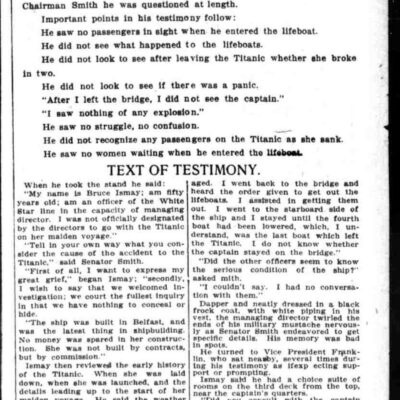

Titanic Disaster: Newspaper Articles (1912-1922)
$19.90 Add to Cart -
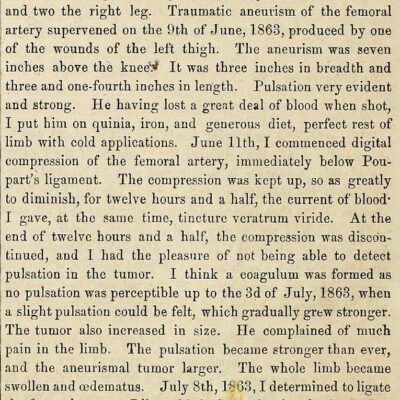
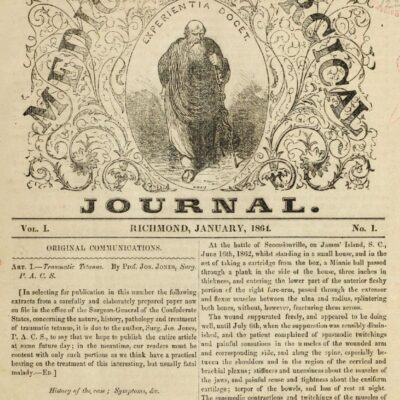
Civil War Confederate States Medical and Surgical Journal (1864 – 1865)
$19.50 Add to Cart -
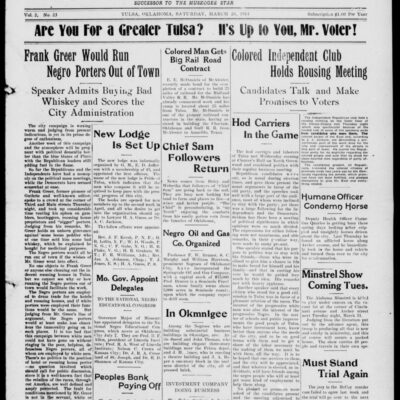
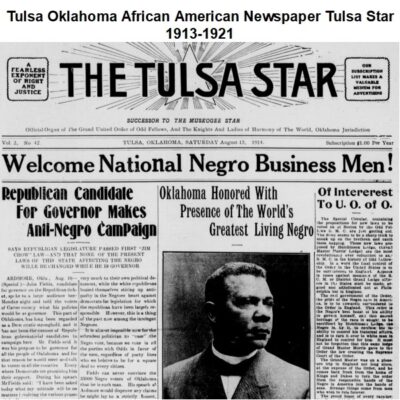
Tulsa Oklahoma African American Newspaper Tulsa Star 1913-1921
$9.90 Add to Cart -
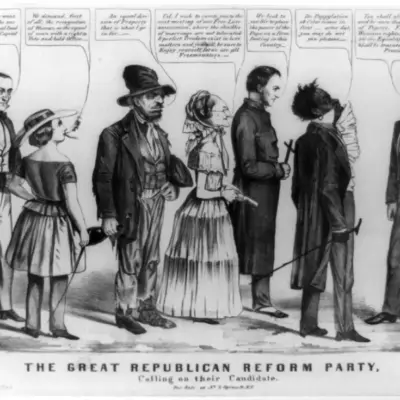

Slavery Political Cartoons: Cartoon Slavery 1789 – 1880
$19.50 Add to Cart